Discovering the pink lagoon, nature walks and beaches of Torrevieja on the Costa Blanca (Spain.
Torrevieja is one of the Costa Blanca’s liveliest resorts, and very popular with the British and other European visitors; it was originally a traditional salt-mining and fishing village. The town is conveniently located south of Alicante City and some 34 kilometres from both Alicante and Murcia’s San Javier airports (approx. 30 minutes by car). Natural attractions include a diversity of great beaches, seawater rock pools and the extraordinary salt lakes.
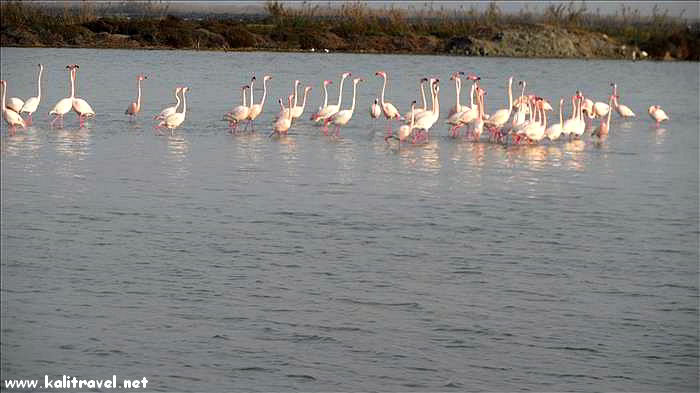
The Natural Park of La Mata and Torrevieja Lagoons are one of the most important wetlands in the Valencian Region and one of the biggest salt producers in Europe – 3,700 ha. of protected parkland, with global recognition as an important conservation area, it’s home to an interesting variety of wildlife, particularly flamingos and other aquatic birds.
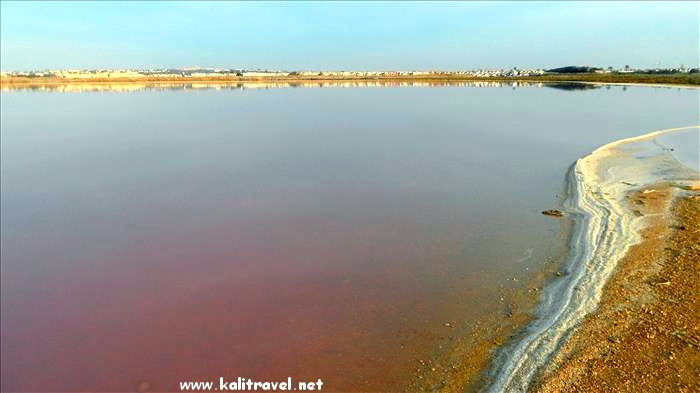 There are two saltwater lakes, Laguna de Torrevieja and Laguna de La Mata, which are remarkably different in colour, due to various factors which include the high salt content of the waters and the presence of algae and crustaceans. Torrevieja Lagoon has a pink hue, which can be quite startling, depending on the light and time of year. The salt industry is located here and you can see the emblematic ‘salt pyramids’ beside the lake.
There are two saltwater lakes, Laguna de Torrevieja and Laguna de La Mata, which are remarkably different in colour, due to various factors which include the high salt content of the waters and the presence of algae and crustaceans. Torrevieja Lagoon has a pink hue, which can be quite startling, depending on the light and time of year. The salt industry is located here and you can see the emblematic ‘salt pyramids’ beside the lake.
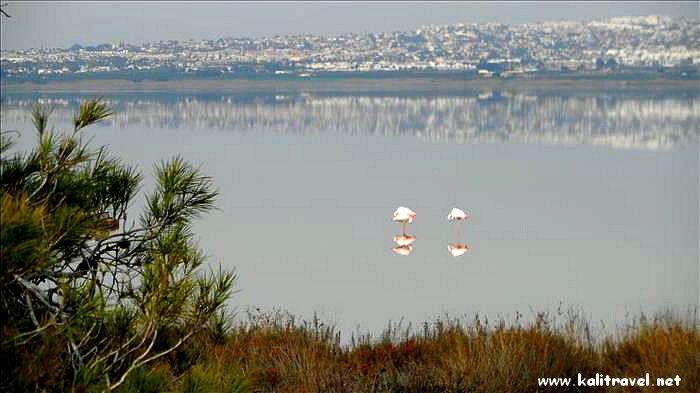
La Mata Lagoon is naturally green, reflecting the pine trees on the water’s edge. The visitors’ interpretation centre is situated here, where you can learn about the natural reserve, the wildlife, nature trails and special guided tours. There are several lookout posts for birdwatchers where you can observe the beautiful flamencos without disturbing them. There are several easy walks, with cycle lanes, and picnic areas around the lakes, which are suitable for everyone – we even saw people on horse back enjoying a ride.
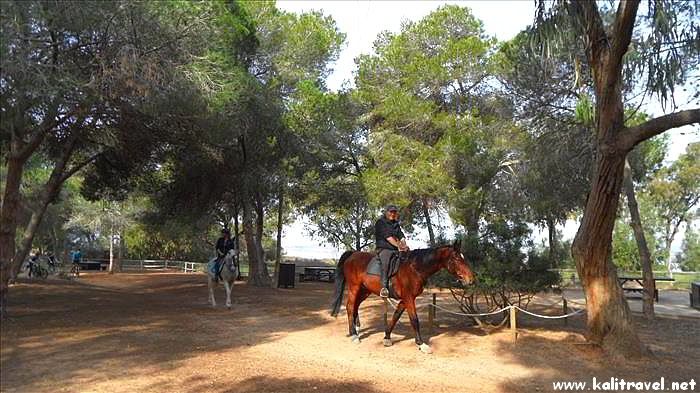
This is a scenic area of outstanding beauty, wonderful for nature lovers and walkers. There are several footpaths and picnic areas, and a cycle route along the Via Verde which follows the old railway line between the salt lakes, along the shores of the pink lagoon, down to the coast by Acequión beach. This is one of the mosts beautiful walks on the Costa Blanca.
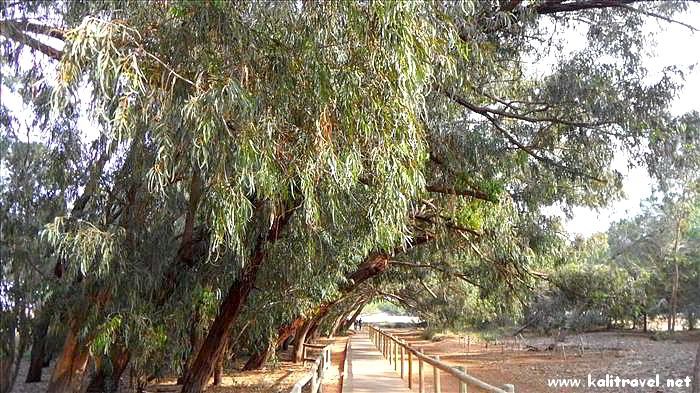
Torrevieja is sea and salt! Learn about the origins of Torrevieja at the visitors’ centre in the old railway station, and discover the history of the town’s unique salt industry…the salt lakes date back to the 13th century.
The Habanera Museum is also located in the ‘Plaza de la Estación’; find out why this Caribbean music became so popular in Torrevieja centuries ago.
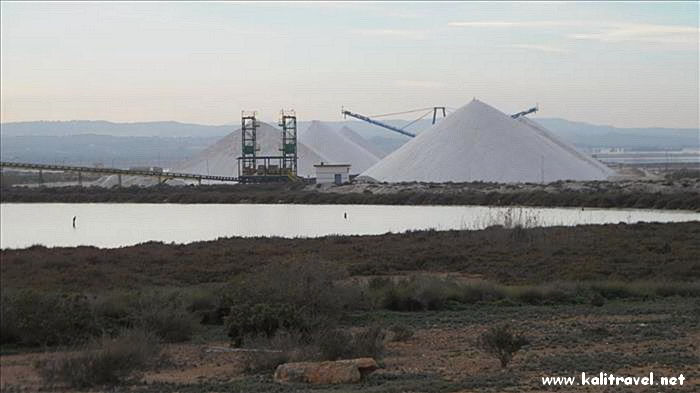
‘El Museo del Mar y la Sal’ sea and salt museum reflects the history of Torrevieja’s seafaring and salt extraction traditions. Ethnic cultures, underwater archaeology, the salt lakes, traditional and coastal fishing, sailing, and nautical carpentry are just some of the interesting sections. Don’t miss the salt crafts and museum workshop, where you can admire a unique display of delicately handcrafted ‘salt boats’. This is just one of the fascinating history museums in Alicante Province.
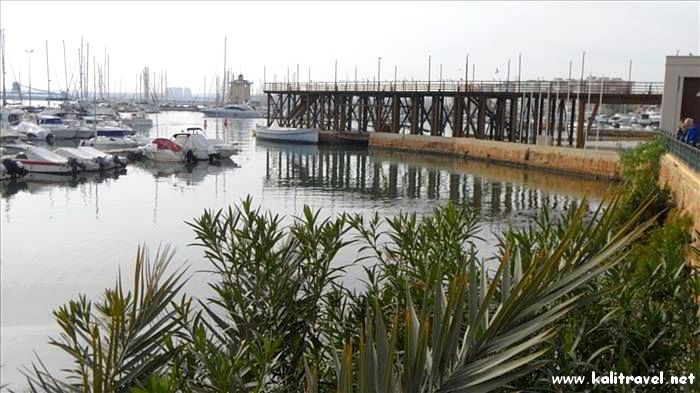
‘Eras de la Sal’ is a warehouse and jetty, used from 1777 to 1958 for transporting salt to offshore merchant ships; the distinctive building, featuring the industrial-style architecture of the 18th century, and wooden structures have been painstakingly rebuilt in the original location by the Vistalegre waterfront, down by the harbour. The world-famous International Habaneras Music Contest is held on the patio on summer evenings, every year at the end of July.
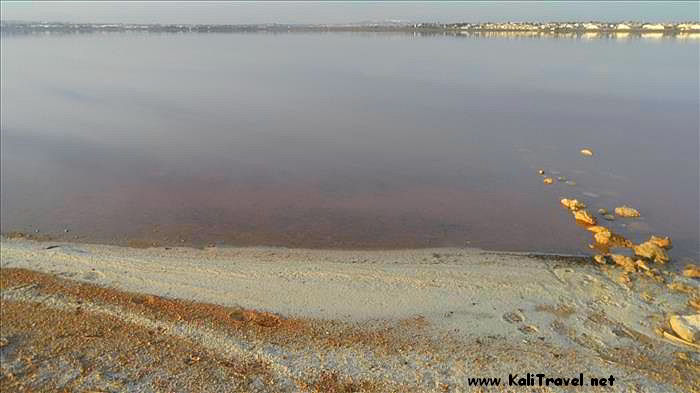
If you’re searching for the perfect romantic setting, the salt lakes at sunset offer views you’ll only see once in a lifetime as the lagoon reflects pinkly under the fading light…
Discovering Beaches and Coves
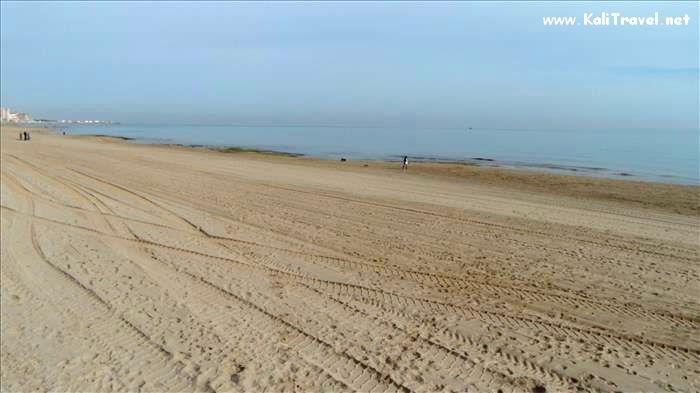
Along the marvellous Torrevieja coastline you’ll find a succession of rocky coves and wide sandy beaches, from La Mata down to Punta Prima in the south.
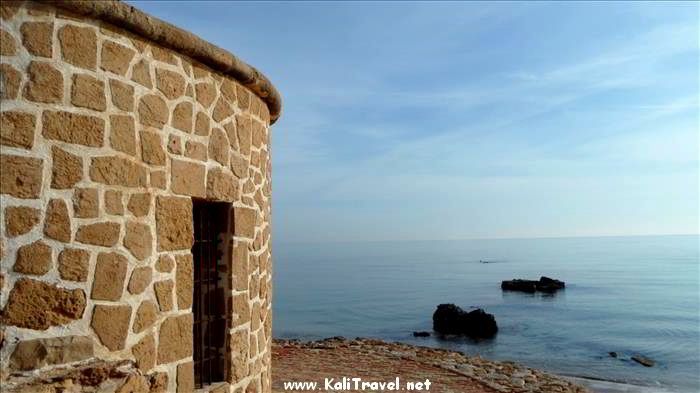
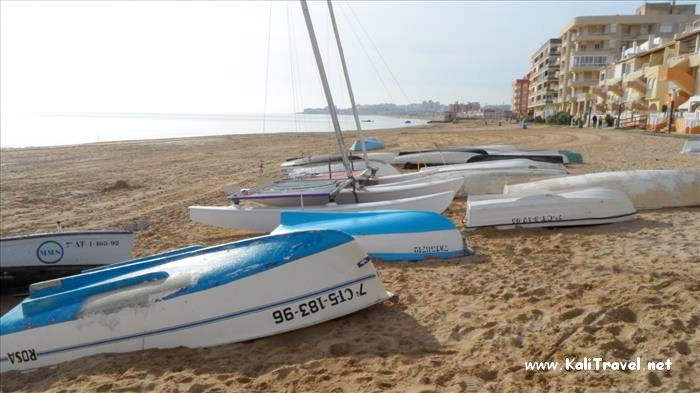 Torrelamata beach takes it’s name from the ancient watchtower on the seafront. It’s a popular sandy beach with a boardwalk promenade where there are several restaurants and cafés.
Torrelamata beach takes it’s name from the ancient watchtower on the seafront. It’s a popular sandy beach with a boardwalk promenade where there are several restaurants and cafés.
To the north, a water channel marks the start of the beautifully natural area of Guardamar sand dunes.
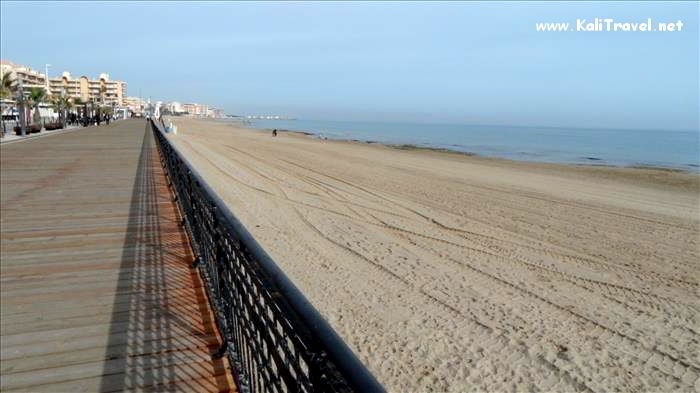 La Mata is Torrevieja’s longest beach – 2,300 metres of fine golden sandbeach with a smart boardwalk seafront promenade with a variety of cafés and restaurants. There are play zones for the kiddies and facilities for the disabled.
La Mata is Torrevieja’s longest beach – 2,300 metres of fine golden sandbeach with a smart boardwalk seafront promenade with a variety of cafés and restaurants. There are play zones for the kiddies and facilities for the disabled.
To the north, the sand dunes continue to Guardamar de Segura, and to the south there are more areas of protected dunes. La Mata salt lake is only a short walk away inland.
The Calas
Cala Cabo Cervera is a very popular, small sandy cove by Cape Cervera; there’s a short promenade and access points for the disabled. Cala del Mojón is a wide sandy bay encompassed by rocks which are ideal for fishing; access points for the disabled. Cala de la Zorra is a discreet little cove with sand and rocks, and clear calm waters – easier to access on foot rather than by car. Cala de la Higuera is similar to Cala de la Zorra, but mainly gravel and rock.
Playa de Los Locos is just north of Torrevieja centre, past Punta Carral. It’s a lovely beach of fine golden sands, with a smart seafront, equipped with all the amenities and services. There are children’s play zones on the beach and a recreational float platform in the sea during the summer; also equipped with facilities for people with reduced mobility and a Red Cross Post. The name translates as ‘beach of the lunatics’ referring to an old asylum here many years ago. Cala Palangre is the tiny cove surrounded by rocks located at the end of Playa de Los Locos.
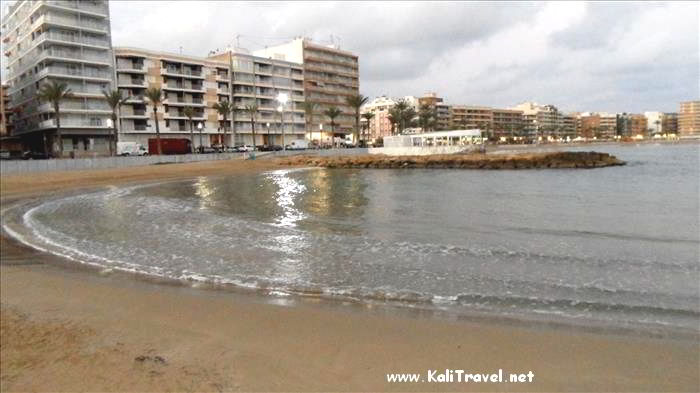 Playa del Cura is situated in the heart of Torrevieja and the most popular beach in town.
Playa del Cura is situated in the heart of Torrevieja and the most popular beach in town.
The lively seafront has many souvenir shops, eateries, ice-cream parlours and pubs, and the distinctive Mediterranean Cultures Monument . There’s a tourist information booth and facilities for the disabled.
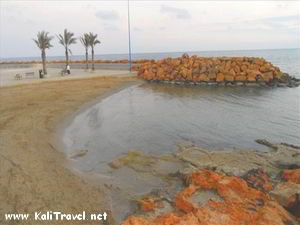
Bordering the Juan Aparicio Promenade, there’s a succession of small beaches and seawater pools, between Playa del Cura and the harbour. It’s a popular place all year round with an amazing selection of seafront restaurants and cafés.
‘Dique de Levante’ is the emblematic eastern seawall beside the harbour, a boardwalk of almost 1.5 kilometres jutting out into the sea, which offers panoramic views of Torrevieja. A statue of a woman waving farewell to an imaginary sailor is another popular landmark.
El Acequión beach is by Torrevieja harbour. A channel provides the Acequión salt lake with fresh seawater.
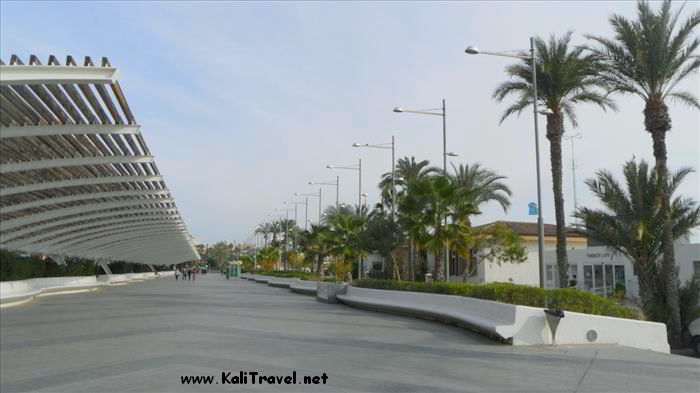
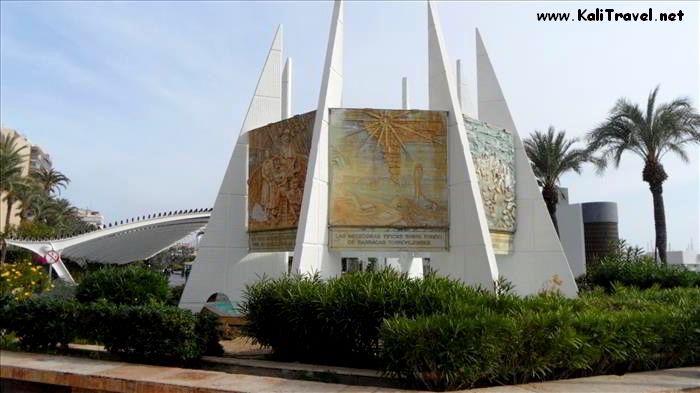 The smart Vista Alegre promenade fronts the harbour – you’ll find a selection of reasonably-priced restaurants and points of reference such as the ‘Sociedad Cultural Casino’ (1867), Torrevieja Nautical Club, and Eras de Sal (restored 19th century salt pier.
The smart Vista Alegre promenade fronts the harbour – you’ll find a selection of reasonably-priced restaurants and points of reference such as the ‘Sociedad Cultural Casino’ (1867), Torrevieja Nautical Club, and Eras de Sal (restored 19th century salt pier.
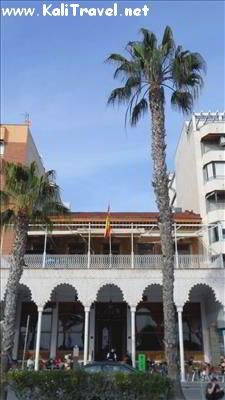
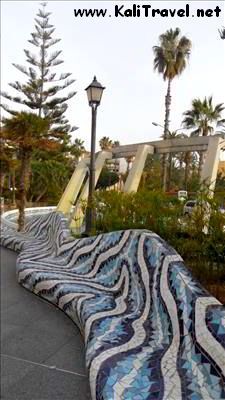
Walk a couple of streets back from the seafront to see the historic Plaza de la Constitución, where you’ll find the Town Hall and the magnificent Inmaculada Concepción Church (1789).
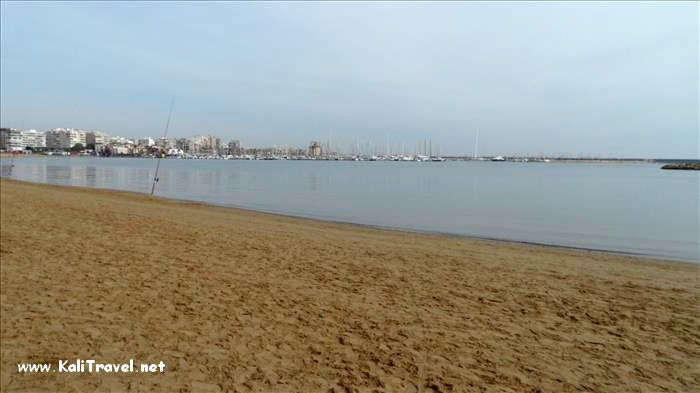 Los Náufragos beach is separated from Playa del Acequión by a salt dock (used to store salt from the salt lakes and to load merchant ships). It’s also one of the busiest beaches in town, with a promenade, kiddies’ play areas, beach volley nets and pedaloes, to add to the fun. There’s a Red Cross Post to watch for your safety. At the southern end there are rocks which are ideal for fishing enthusiasts.
Los Náufragos beach is separated from Playa del Acequión by a salt dock (used to store salt from the salt lakes and to load merchant ships). It’s also one of the busiest beaches in town, with a promenade, kiddies’ play areas, beach volley nets and pedaloes, to add to the fun. There’s a Red Cross Post to watch for your safety. At the southern end there are rocks which are ideal for fishing enthusiasts.
Cala Ferris offers one of the most spectacular sceneries in Torrevieja – a small beach of fine golden sand backed by sand dunes and masses of palm trees, and crystal clear sea. It’s in a privileged location unspoilt by development and the most awesome place to watch the sunset!
Cala Piteras or Rocío del Mar is a small rocky cove, on the border of Orihuela Costa to the south.
A romantic stroll beside the sea, sun on your face and a soft breeze in your hair…14 kilometres of coastline and a choice of seafront promenades, discovering Torrevieja is always a pleasure!
Related Posts about the Costa Blanca:
Alicante Province – North to South
- Costa Blanca Beaches and Coastal Resorts with info on outdoor activities, watersports, local history, cuisine, fiestas, getting here…
- Denia
- Ondara
- Moraira
- Benissa
- Calpe
- Jalón Valley
- Altea
- Alfaz de Pi & El Albir
- Guadalest Valley – Guadalest village and reservoir walk
- Guadalest Valley – Benimantell, Beniarda, Benifato, Abdet, Confrides
- Benidorm
- Finestrat
- Finestrat – Mountains Walks – Puig Campana
- Villajoyosa
- El Campello
- San Juan beach
- Alicante
- Tabarca Island
- Torrevieja
- Rojales
- Pilar de La Horadada
Discover the World with ![]() the blog with a focus on independent budget travel.
the blog with a focus on independent budget travel.



